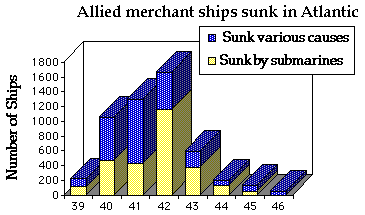- People's images of flight and its safety are heavily influenced by the images shown in the media after plane crashes.
- Despite the heavy influence of these images, most people believe that the images shown in the media have little to no effect on their perception of aircraft.
- This influence is easily reduced or done away with by education on the aircraft and the amount of thought and math that goes into keeping them safely in the air.
Images Shown in the Media Stick in People's Minds, Influencing Their Thoughts on the Safety of Aircraft
When shown images of crashed aircraft, people tend to respond emotionally. The media has become very good at selecting images carefully to remind people of the passengers inside the plane, and more importantly, making it seem like this is the norm, rather than an extremely rare occurrence. They generate images specifically designed to stay with you all day, and to influence your opinion of the topic. As seen in the video to the right, these images are often quite graphic, and even using the dead or injured to increase their effect.
Even when people can escape the effects of these particular images, the stories themselves stay with the viewer, and can cause people to think of planes as less safe than they are. While The Guardian says that planes average about one crash in 2.4 million flights (as comparison, this is less than the odds of dying from an asteroid strike), especially when, as that article discusses, several crashes happen within a short period of time. Additionally, even without these particular graphic images, the first examples people think of when they think of aircraft, and particularly crashes, are always the images shown in the media of the crashed airplanes, or the airplanes that are on their way to crashing. The increasing amount of data about a given crash available to the media has only increased their ability to show these emotionally charged and influential data, and to maximize that impact.
One interviewee references the "dash cam footage," or footage from a camera that sees what the pilot is seeing, of the plane as it crashed into a river. The media now has the power to make people feel as if they themselves are in the cockpit of an aircraft as it crashes, which only increases the emotional power of the images they're displaying. Additionally, access to the cockpit recorders gives them the ability to let the public know what the pilots were thinking before crashes. Pilots sometimes panic before a crash, and the audio from this, when added to dash cam footage, can produce the image of pilots, people who often hold our lives in their hands, as people who panic in dangerous situations or even people who deliberately crash or nearly crash planes. Additionally, they often run stories about pilots who try to fly drunk, something that doesn't occur very often, but shows up in the news every time it occurs. These images of airplanes as frequently crashing death traps, and of pilots as suicidal and incompetent drunkards, can combine to make people fear for their safety when flying. Despite all data pointing to the opposite, people retain these images, and 16 of 104 people surveyed reported their fear levels as a five or above on a scale from zero to 10 (my survey). Clearly, the media is manipulating the public opinion of aircraft very effectively.
People Still Believe That Their Opinions Remain Uninfluenced by The Media
 |
| Perspective Change (Scale: 0-10) |
Even though the media has heavily influenced people's opinions of aircraft, people remain relatively oblivious when it comes to this influence. The same survey from above revealed that half of those surveyed believed that, on a scale from zero to 10, media coverage of aircraft, their perspective change rated a zero or a one (little to no change), and only seven people rated it higher than a five. No one at all thought their change was a nine or 10, despite the videos above indicating that their perspectives were clearly heavily influenced by the media. People clearly indicated that they were following media coverage of theses crashes fairly carefully, and more than half indicated that their knowledge of a recent crash was a five or higher.
 |
| Knowledge of Crashes (0-10) |
While this knowledge is certainly good (the right to know is useless if it is not exercised) this exposes them to far greater influence from the media, whether from the photos they choose to show, the audio clips they play, even just the particular words they use to describe a particular incident, everything is being used to make an audience see things the way the given media source wants the viewers to see them. Especially when people use social media such as Facebook and Twitter to get their news, even slightly biased coverage can heavily shape a viewer's opinion of the events, or people involved in the given events. Unfortunately, while people are quite good at exercising their right to know about any given event that affects them, this exercise leaves them open to the media's influence, and as we've shown, people are not good at telling when they're being influenced by the media.
This Influence Can Be Countered Effectively With Education
While people are very easily influenced, education about aircraft and how they work counters this influence very effectively. An interview (to the left) with an Aerospace Engineering Major at the University of Maryland reveals why this is the case. When people learn about the planes, they realize that planes are not the death traps that the media makes them out to be, and the entire narrative that the media constructs begins to unravel. When they realize just how safe planes are, the narrative itself falls apart. They realize that it's not, in the interviewee's words "dragon-like flight," but rather, carefully calculated, with safeguards and checklists built in at every point in a flight to make sure that nothing goes wrong, and that if something does, there are procedures to cover virtually every possible occurrence.
Overall, while people are exercising their right to know, they're doing so in a way that leaves them wide open to media manipulation. The media takes full advantage of this opening, and gives people information that, while not biased, is framed in the way they want to make people think what they want. People are often unable to see this, and are left further open to this manipulation. However, with proper education about aircraft, and their design process, this influence can be mitigated. If we are to be informed media consumers, we must remain educated in the media we are consuming, or the media will be able to control our opinions on everything they show.





